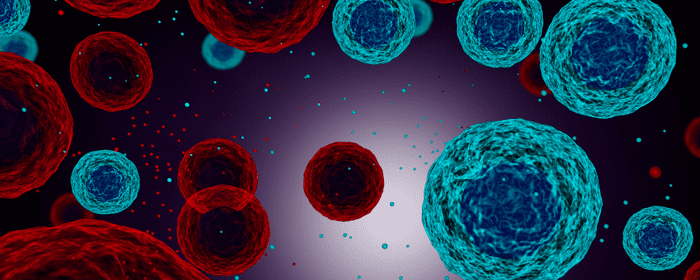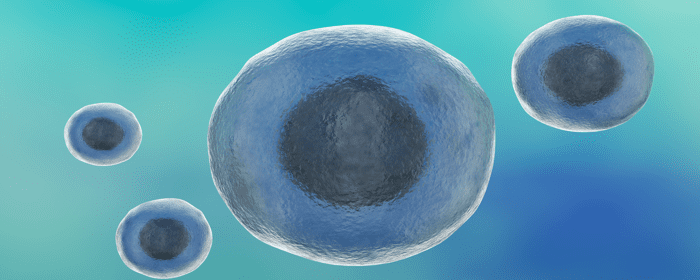
by Stemedix | Jan 8, 2024 | Age Management, Health Awareness, Heart Failure, Stem Cell Research, Stem Cell Therapy
The Centers for Disease Control and Prevention states that an average of 795,000 people each year in the United States suffer a stroke. The majority of these are new strokes. Knowing whether you have a high risk of suffering a stroke is important, but so is knowing what you can do to lower your risk.
One important step you can take for stroke prevention is exercise. Learn more about what causes strokes and why exercise can be such an important prevention tool.
Understanding Strokes: What They Are and What Causes Them
You can think of a stroke as the equivalent of a heart attack on your brain. It is a life-threatening condition that occurs when a part of your brain doesn’t receive an adequate amount of blood. Strokes usually occur from experiencing bleeding in the brain or a blocked artery.
There are two main types of strokes: ischemic and hemorrhagic strokes. Ischemic strokes happen when cells don’t get enough blood and therefore don’t get enough oxygen. An ischemic stroke occurs if something blocks blood vessels in the brain. Blood clots can lead to ischemic strokes.
Hemorrhagic strokes lead to bleeding in or around your brain. It can occur if a blood vessel in your brain breaks open and causes bleeding that puts pressure on your brain tissue. It can also happen if you experience bleeding in the space between the brain and its outer covering.
The symptoms of a stroke vary depending on which areas of the brain it affects. You can experience one or more symptoms like:
- Difficulty speaking
- Blurred or double vision
- One-sided weakness
- Paralysis
- Loss of muscle control on one side of the face
- Loss of coordination
- Dizziness
- Vomiting
- Nausea
- Slurred speaking
- Partial or total loss of one of the senses
- Memory loss
- Seizures
- Headaches
The cause of the stroke can depend on the stroke type. Ischemic strokes usually occur because of blood clots, while hemorrhagic strokes happen as a result of high blood pressure, brain cancers, brain aneurysms, and more.
Some factors can put you more at risk of suffering a stroke. These are:
- Obesity
- Smoking
- Poor diet
- Physical inactivity
- Diabetes
Strokes have the potential to occur at any age, but the risk rises as you grow older. If there’s a history of strokes in your family, you’re also more likely to suffer from one yourself. Drinking too much alcohol is another way to increase your chances of a stroke.
How Exercise Helps to Prevent Strokes
Exercise plays a role in reducing several stroke risk factors, including diabetes, high blood pressure, and even stress. For primary stroke prevention, high blood pressure is the most important risk factor. Physical activity helps control blood pressure because it improves vascular function.
Type 2 diabetes increases the chances of having a stroke because excessive blood glucose levels over time increase fatty deposits. These deposits narrow or block blood vessels, cutting off blood to the brain. Exercise helps improve glycemic control, so it can be an important way of managing your type 2 diabetes.
Exercise also helps promote lower cholesterol levels. Having high cholesterol levels causes plaque buildup in your arteries, including those that send blood to your brain.
For older people or those with certain medical conditions, turning to light exercise may be beneficial. Some options include gardening, taking walks, and even doing housework. The key is to avoid being inactive for long periods.
For adults who can manage moderate exercise, it’s important to engage in at least 2 ½ hours of exercise per week. You can choose activities like cycling, brisk walking, swimming, or anything else that gets your heart rate up.
Other Lifestyle Changes for Stroke Prevention
Besides adding more physical exercise to your life, you can also turn to other strategies to help prevent a stroke. For one thing, if you smoke, you should quit. Smoking significantly damages blood vessels, triggering plaque formation and even causing blood vessel breakdown. Smoking increases your blood pressure, too.
You should take a close look at your diet. Eating a diet that causes higher cholesterol levels can contribute to the development of plaque. Plaque narrows arteries and makes blood clots more likely.
Stick to lean proteins, unsaturated fats, fruits, and vegetables, and avoid sugary foods and saturated fats. You should also add fiber-rich foods to your diet. It is also important to cut down on the amount of alcohol you drink. Alcohol increases your blood pressure, making blood clots more likely to happen. Blood clots can cut off your blood supply and lead to strokes.
Another important step you can take if you want to prevent a stroke is to incorporate stress management techniques into your day. Stress makes the heart work harder, which increases blood pressure.
At the same time, sugar and fat levels in the blood also increase when you experience stress. They impact arterial health as well. All these factors may lead to the development of clots. Finding ways of managing stress goes a long way toward addressing these issues.
You can opt for doing deep breathing exercises, as well as focusing on mindfulness strategies to help you stay in the present. Some people benefit from meditation or yoga, while others do better if they take time to exercise. Taking up relaxing hobbies is another excellent option.
Regenerative Medicine: Can It Help with Strokes?
Working to prevent strokes is important, and your strategies for doing so can be as simple as adjusting your diet and adding exercise to your daily routine. If you’ve already experienced a stroke, however, you can also use these strategies to prevent future ones. Lowering your blood pressure, managing your diabetes, and lowering stress levels can all help.
If a previous stroke has left you with symptoms that affect your life, a treatment option that shows promise is stem cell therapy. Stem cell therapy encourages your body to heal using its natural processes, allowing you the chance to regain some of your brain’s lost function. Ask your doctor about regenerative medicine options like stem cell therapy.

by admin | Jan 4, 2024 | Osteoarthritis, Exosomes, Mesenchymal Stem Cells, Stem Cell Research, Stem Cell Therapy
Osteoarthritis (OA) is a chronic joint condition that causes pain and lack of mobility through the progressive degradation of joint cartilage. While there are several current pharmaceutical, physical therapy, and surgical treatments to address the symptoms of OA, researchers are interested in developing new therapeutic treatment approaches to address the relentless progression of the condition.
Considering their documented biocompatibility, immunomodulatory properties, and ability to precisely target specific cells and tissues, exosomes have recently emerged as a promising therapeutic option as a drug delivery system (DDS) for the treatment of OA. Specifically, these exosome-based strategies have demonstrated a safe and effective way to enhance cartilage repair, mitigate inflammation, and alleviate the persistent pain associated with OA.
While the benefits of exosome-based DDSs have been demonstrated in numerous studies, according to the author of this review, the specific application of this option for the purpose of treating OA has not been sufficiently explored.
In this review, Lu et al. summarize the emerging developments surrounding exosome-based DDSs of OA and highlight the present challenges associated with this evolving therapeutic option.
Recent studies have demonstrated the benefit of using exosomes for the delivery of drugs designed to treat OA. Specifically, researchers have found that exosomes derived from mesenchymal stem cells (MSCs) are able to be effective carriers for the delivery of specific molecules that lead to the promotion of chondrogenesis and improvement in cartilage regeneration. These same exosomes have also demonstrated themselves to be effective carriers for the localized delivery of anti-inflammatory drugs known for their potent anti-inflammatory and immunosuppressive effects.
Other studies show the potential of exosomes as an effective way to deliver growth factors to the affected joint in a targeted and sustained manner. The same exosomes have also demonstrated promise as a platform for gene delivery to areas affected by OA; a few of the notable advantages include the ability to safeguard genetic material from degradation and enable targeted delivery to specific cells and tissues.
While there is seemingly unlimited potential for using exosomes as DDSs in OA treatment, Lu et al. also call attention to several technical challenges and limitations that need to be addressed in order to fully maximize their potential and to ensure their safe application. These challenges and limitations include figuring out how to obtain a consistent supply of high-quality exosomes, developing effective methods that allows for efficient loading and controlled release of therapeutic molecules within exosomes, and a current lack of comprehensive long-term data regarding the safety and biocompatibility of exosome-based therapies.
Despite these challenges and limitations, the authors conclude that exosomes have emerged as highly promising candidates for drug delivery in OA therapy and offer numerous advantages over conventional delivery systems.
Source: Jun Lu, Yan Zhang, Xinquan Yang, Hongmou Zhao, Harnessing exosomes as cutting-edge drug delivery systems for revolutionary osteoarthritis therapy, Biomedicine & Pharmacotherapy, Volume 165,2023,115135, ISSN 0753-3322, https://doi.org/10.1016/j.biopha.2023.115135.

by admin | Jan 3, 2024 | ALS, Stem Cell Research, Stem Cell Therapy
Amyotrophic lateral sclerosis (ALS) is a rare, deadly progressive neurological disease that affects the upper and lower motor neurons. Characterized by weakening and gradual atrophy of the voluntary muscles, ALS gradually affects the ability to eat, speak, move, and eventually breathe.
With an estimated survival rate of 2 to 5 years from disease onset, 90% of ALS patients develop sporadic ALS and there is no known cure. Although the cause of ALS remains unknown, there is scientific evidence that both genetics and environment are key contributors. This evidence includes over 30 different gene mutations and a number of environmental factors (exposure to toxins, heavy metals, pesticides, smoking, and diet) have been found to be associated with neurological destruction and ALS development. Additionally, ALS has been found to be approximately 2 times more likely to occur in men than women.
In the search for a definitive cure for ALS, the use of mesenchymal stem cells (MSCs) for both treatment and management of the condition has been increasingly more common in preclinical and clinical studies.
In this review, Najafi et al. discuss multiple aspects of ALS and focus on MSCs’ role in disease management as demonstrated in clinical trials.
MSCs are multipotent cells with immunoregulatory, anti-inflammatory, and differentiation abilities that make them a strong candidate for use in therapeutic applications intending to expand the lifespan of ALS patients.
To date, preclinical research investigating the cause and potential treatment of ALS primarily relies on data gathered from rat and mouse models. As part of these models, researchers have discovered that the transplantation of MSCs through multiple routes (including intrathecal, intravenous, intramuscular, and intracerebral) can be a safe and effective way to delay the decline of motor function and promote neurogenesis.
These preclinical studies have also demonstrated that the administration of MSCs from specific tissues has shown significant advantages in delaying the degeneration of motor neurons, improving motor function, and extending lifespan.
Over 20 years of clinical research have found that direct injection of autologous expanded MSCs is safe and well tolerated and demonstrated a significant decrease in disease progression and increase in life expectancy in patients.
The authors conclude that ALS is a fatal neurodegenerative disease with no definitive cure. However, several preclinical and clinical studies have shown that MSC’s anti-inflammatory, immunoregulator, and differentiation properties, have demonstrated to be a good therapeutic approach for treating ALS.
Source: Najafi S, Najafi P, Kaffash Farkhad N, et al. Mesenchymal stem cell therapy in amyotrophic lateral sclerosis (ALS) patients: A comprehensive review of disease information and future perspectives. Iran J Basic Med Sci. 2023;26(8):872-881. doi:10.22038/IJBMS.2023.66364.14572

by Stemedix | Jan 1, 2024 | Stem Cell Therapy, Back Pain, Regenerative Medicine, Stem Cell Research
According to the World Health Organization, lower back pain affects 619 million people around the world. Lower back pain is an issue that people of all ages suffer from, and it can be debilitating. Many conditions, injuries, and damage can lead to this kind of back pain.
If you’re struggling, understanding the causes of the problem can help when deciding on the right treatment. Let’s take a closer look at the causes of lower back pain.
Muscle Strain or Sprain
Perhaps the most common reasons people experience lower back pain are muscle strains and sprains. These issues can occur gradually from overuse, or they can occur suddenly after an injury.
A low back strain occurs if you stretch the muscles that hold your spinal column in place. Tiny tears can form, leading to weaker muscles that have a harder time holding the bones of your spinal column correctly. That leads to the spine being less stable, which causes lower back pain.
A sprain occurs when the ligaments, which are the bands of tissue that hold bones together, tear away from their attachments. This, too, can happen from overuse or from an injury. The most common symptoms of muscle strains or sprains are muscle spasms, stiffness, and pain.
Degenerative Disc Disease
Degenerative disc disease is a condition in which the cushioning in your spine wears away. Your spinal discs are cushions between the bones (vertebrae) in your spinal column. They help you move and act as shock absorbers.
However, as you age, these discs begin to wear away, leading the bones to start rubbing together. Injuries and diseases can also wear away the discs.
Some of the symptoms of degenerative disc disease are:
- Pain that worsens when bending, lifting, or sitting
- Numbness and tingling in your legs or arms
- Pain that radiates down to your lower back and buttocks
The symptoms can come and go, and they can last for weeks or months at a time. The pain can range from mild to severe.
Herniated Discs
Herniated discs are injuries to the spine. Between the vertebrae in your spine are cushions called discs. The discs function as buffers, letting you move around with ease. If one of these discs tears or leaks, you have a herniated disc.
It’s a condition that affects men more than women, and it’s more likely to occur in people who sit for long periods, lift heavy objects, perform repetitive twisting or bending motions, or smoke.
Discs have gel-like centers and a firm outer layer, which can crack over time. When the inner gel-like substance pushes through the crack, you have a herniated disc. That leaked material can press on spinal nerves.
Sciatica
Sciatica is nerve pain that occurs because of an injury or irritation to the sciatic nerve. You have two sciatic nerves, one on each side of the body, that run down your legs until they reach below your knee, where they then split into other nerves. Pain that occurs anywhere along that nerve is considered sciatica pain.
Herniated discs can cause sciatica as can arthritis, degenerative disc disease, and injuries. You are more at risk if you are obese, don’t have a strong core, or have a job that requires lots of lifting.
Osteoarthritis
This is the most common type of arthritis, and it occurs when the cartilage that covers your joints wears down over time, allowing your bones to rub together. Cartilage functions like a shock absorber as well as a lubricant, letting the bones that make up your joints move smoothly. With arthritis, this movement is more difficult and painful.
One of the most commonly affected areas is the lower back. Although it’s not entirely clear what causes osteoarthritis, scientists believe it occurs as a result of aging, health conditions that affect your joints, falls, and other accidents.
Spinal Stenosis
Spinal stenosis is a condition in which the space around your spinal cord becomes too narrow, leading to irritation of the cord or the nerves that branch off from it. You can think of your spinal canal as a tunnel that runs through each of the vertebrae that make up your spine. Your spinal cord is contained within this tunnel.
If the space narrows, your nerves can become compressed or pinched, causing back pain. Symptoms can depend on the type of spinal stenosis you have and can include:
- Heavy feeling in your legs
- Tingling or numbness in the foot, leg, or buttocks
- Pain that gets worse when you stand or walk for a long time
- Pain in your lower back
You can have acquired spinal stenosis, meaning it develops over time, or congenital spinal stenosis, which you have from birth. Herniated discs, osteoarthritis, spinal injuries, and many other conditions can cause it.
Spondylolisthesis
Spondylolisthesis is a condition that causes lower back pain, and it occurs when one of the bones in your spine slips out of place and onto the bone below it. This can put pressure on a nerve, resulting in back or leg pain.
Common symptoms of spondylolisthesis include:
- Difficulty walking or standing for long periods
- Back stiffness
- Hamstring muscle spasms
- Pain when bending
- Foot tingling, weakness, or numbness
Young athletes, especially gymnasts and football players, are at risk. Some people are born with spondylolisthesis.
Fractures
If you have a fracture in a bone in the lower back, this can also cause lower back pain. Fractures can occur from traumatic injuries like falls or conditions like osteoporosis.
Regenerative Medicine for Lower Back Pain
No matter what is causing your lower back pain, you can get relief from symptoms. Most people turn to pain medications and anti-inflammatories to treat back pain, but all that those drugs do is hide the symptoms. They don’t get to the underlying cause of the problem. Regenerative medicine offers something different.
Regenerative medicine, also known as stem cell therapy, stimulates the natural healing process that you need to start feeling better. Turn to your healthcare provider to see if it’s the right choice for you.

by admin | Dec 28, 2023 | Diabetes, Mesenchymal Stem Cells, Stem Cell Research, Stem Cell Therapy
Type 2 diabetes mellitus (T2DM) is a serious health condition characterized by progressive deterioration in glycemic control resulting from decreased insulin sensitivity and diminished insulin secretion. Currently, it is estimated that over 462 million people worldwide are affected by T2DM.
While diet, physical exercise, and glucose-lowering medications have been shown to improve hyperglycemia, the results have been temporary and have not been able to inhibit the pathogenesis or reduce the morbidity associated with this condition.
With the need for more effective approaches for the treatment of T2DM to be developed, Zang et al. conducted this single-center, randomized, double-blinded, placebo-controlled phase II trial study to explore the efficacy and safety of intravenous infusion of umbilical cord-derived mesenchymal stem cells (UC-MSCs) in Chinese patients with T2DM.
MSCs are a type of adult stem cell that exhibits profound anti-inflammatory and immunomodulator capacities. Considering the successful application of MSCs in a number of autoimmune diseases, including stroke, myocardial infarction, rheumatoid arthritis, and systemic lupus erythematosus, the authors hypothesized that MSC transplantation might also be a therapeutic option for the treatment of T2DM.
Specifically for this study, the authors randomly assigned 91 patients to receive intravenous infusion of UC-MSCs or placebo three times at 4-week intervals and followed up for 48 weeks over a period of three years.
The primary endpoint established for this study was the percentage of patients with glycated hemoglobin (HbA1c) levels of < 7.0% and daily insulin reduction of > 50% at 48 weeks; additional established endpoints included changes of metabolic control, insulin resistance, and safety.
At the end of the 48-week follow-up period, Zang et al. report that 20% of patients in the US-MSCs group and 4.55% reached the primary endpoint with the percentage of insulin reduction of the UC-MSCs group being significantly higher than that of the placebo group. The authors also reported that the glucose infusion rate (GIR) increased significantly in the UC-MSCs group while there was no significant observed change in the placebo group. There were also no major UC-MSC transplantation-related adverse events reported during this study.
While these results are promising, the authors point out that since the age, course of T2DM, condition of the islet β-cell function, and insulin resistance of the enrolled subjects were highly heterogeneous, the results of this study could not be extended to all patients with T2DM. The authors also call for additional long-term follow-up to validate their initial, short-term findings as well as for future well-controlled studies with an increased number of cases to better clarify the efficacy and safety of intravenous infusion of UC-MSCs for the treatment of T2DM.
The authors conclude this study by suggesting intravenous infusion of UC-MSCs administration is a safe and effective approach that could reduce exogenous insulin requirements alleviate insulin resistance and be a potential therapeutic option for patients with T2DM.
Source: Zang, L., Li, Y., Hao, H. et al. Efficacy and safety of umbilical cord-derived mesenchymal stem cells in Chinese adults with type 2 diabetes: a single-center, double-blinded, randomized, placebo-controlled phase II trial. Stem Cell Res Ther 13, 180 (2022). https://doi.org/10.1186/s13287-022-02848-6

by Stemedix | Dec 25, 2023 | Health Awareness, Mesenchymal Stem Cells, Regenerative Medicine, Stem Cell Research, Stem Cell Therapy, Stroke, Studies
According to the Centers for Disease Control and Prevention, more than 795,000 people have strokes every year in the United States, and about 610,000 of these are first or new strokes. Recovering from a stroke can be a complex process that involves many types of therapies, and one option that shows promise is stem cell therapy.
Stem cell therapy promotes growth factors and offers relief from inflammation, providing the possibility of healing the damage the stroke caused. Learn more about stem cell therapy when used for the recovery period after a stroke.
How Strokes Affect the Brain
A stroke is like a heart attack, except it takes place in your brain. It occurs when something blocks the blood supply to the brain, not allowing the organ to get the oxygen and nutrients it needs. If your brain doesn’t receive blood, its cells begin to die off or suffer damage, making it impossible for the organ to do its job.
Your brain controls everything your body does, including how you move and how you think, feel, and communicate. The results of a stroke are immediate.
The two main types of strokes are ischemic strokes and hemorrhagic strokes. Ischemic strokes are the most common type and are caused by blockages. They can occur when:
- A blood clot forms in the main brain artery.
- A blockage forms in the small blood vessels deep within the brain.
- A blood clot from the heart or another type of blockage travels via the bloodstream to an artery supplying the brain.
Hemorrhagic strokes occur when there’s bleeding in or around the brain. They can be the result of a blood vessel bursting in the brain, or a blood vessel on the surface of the brain may burst and leak blood in the area between the skull and the brain.
When you have a stroke, the areas of the brain it affects determine the kind of issues you can struggle with.
Some people experience weakness and paralysis in certain parts of their body, while others struggle with language and the processes of speaking or understanding what other people say. A stroke can even affect what your voice sounds like.
Other issues you may experience include:
- Balance problems
- Incontinence
- Trouble swallowing
- Visual problems
- Extreme fatigue
- Feeling pain
You may also struggle with mental processes like memory, concentration, understanding, and perception. Strokes can even affect your emotions.
Understanding Stem Cell Therapy: What Are Stem Cells?
Stem cells are the body’s building blocks. They are responsible for creating organs, tissues, and even your immune system. They are undifferentiated cells that can become and create specialized cell types. In other words, they can become any cell within the body, depending on where they’re placed.
Stem cells can also divide indefinitely, either creating other stem cells or specialized cells. When used to help the recovery period after a stroke, stem cells can differentiate into brain cells.
When they’re used in the brain, they don’t integrate and become neurons that reconstruct circuits. They instead start pumping out growth factors that enhance the recovery process, allowing new blood vessels and neurons to form. All of this helps make the brain more flexible, giving it a chance to recover after a stroke.
Neuroplasticity is what’s necessary for people who’ve suffered a stroke. It is the ability of the brain to rearrange its circuits, basing the organization on your behaviors.
Benefits of Stem Cell Therapy After a Stroke
Stem cell therapy is minimally invasive. You don’t have to worry about procedures that require long recovery processes or force you to spend time in the hospital. When you get stem cell therapy, the process is fast and can be done as an outpatient treatment.
Stem cells don’t just mask the symptoms of the damage the stroke caused. Experiencing pain after a stroke many times means turning to pain medications, which temporarily give you relief but also have unpleasant side effects. When you turn to stem cell therapy, your brain gets what it needs to start healing.
One of the most important things that stem cell therapy offers is the chance to relieve inflammation. When you suffer an injury of any kind, including a stroke, your body’s natural healing process causes inflammation.
This type of swelling, however, doesn’t allow a regular flow of blood to the injured area. Without the right degree of circulation, the damaged area doesn’t receive nutrients or oxygen, which makes healing more difficult. Stem cells help reduce inflammation, making the process of healing easier.
How the Stem Cell Therapy Process Works
Mesenchymal stem cells (MSCs) have been studied for their potential therapeutic applications in various medical conditions, including stroke. MSCs have several properties that make them attractive candidates for stroke therapy:
- MSCs possess anti-inflammatory properties that can help modulate the immune response and reduce inflammation in the brain following a stroke. Excessive inflammation is a key contributor to secondary damage after a stroke.
- MSCs can modulate the immune system, potentially suppressing harmful immune responses while promoting tissue repair and regeneration.
- MSCs secrete various growth factors and neurotrophic factors that support neuronal survival, growth, and differentiation. These factors can contribute to the repair and regeneration of damaged neural tissue.
- MSCs can stimulate the formation of new blood vessels (angiogenesis), which is crucial for supplying oxygen and nutrients to the damaged brain tissue.
- While the ability of MSCs to differentiate into neurons is limited, they may contribute to neural repair indirectly by interacting with the local environment and supporting the survival of existing neurons.
Is Regenerative Medicine Right for You?
Suffering a stroke can be devastating, leaving you with lasting damage and impacting your quality of life. Along with physical therapy and other treatments your doctor recommends, patients are exploring their options with stem cell therapy. Stem cell therapy and other regenerative medicine options offer the opportunity to give your brain the tools it needs to start healing. By helping reduce inflammation and bringing growth factors to the treatment area, stem cell therapy provides the chance to promote neuroplasticity and start healing.







 St. Petersburg, Florida
St. Petersburg, Florida
